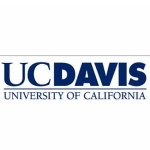
Client Profile:
Located in Davis on the largest University of California campus, UC Davis has transformed over the past 100 years from a pioneering “ag” school into a university that is ranked among the top 10 public universities in the nation. And is one of the top research Universities in the Country.
UC Davis is well known for its contributions to the community through the UC Davis Health System and organizations such as Human Corps, a clearinghouse for student volunteer activities.
UC Davis has been an RMC account since 2009.
Canon was selected as one of three Strategic Sourcing Agreement suppliers back in 2005. For the first 4 years of the contract Canon partnered with ikon as the dealer for UC Davis. After Ricoh’s acquisition of ikon, Canon announced they would work with RMC on a go forward basis. The existing fleet did not immediately follow. In fact, the people who ran the Campus Copier Program had reservations about making the switch. However, with some effort, many meetings and hiring, by RMC, with the ikon on campus tech, UCD Davis ReproGraphics switched.
Over the past 5 years the program has converted from a combination of product, including Ricoh, Xerox, and Toshiba to be 100% Canon.
And the print shop has been on a steady migration from Xerox, HP and Kodak, to RMC.
Good growth has occurred with UC Davis departments not using the ReproGraphics program, including the student run quick copy service becoming 100% RMC Canon.
With all of this success we have never been able to get any traction with MPS.
In 2011 and 2012 we made a concentrated effort to pursue MPS opportunities on campus. We worked closely with the Campus Copier Program and targeted the most likely departments to be interested in the MPS programs we had available at the time. Over the course of the ensuing months we encountered much interest but did not secure any contracts.
Background:
The Social Sciences Department was a blind referral. Blind means that two colleagues were discussing the benefits of RMC’s MPS offering while one client casually mentioned they would be interested in hearing more. The clients were Anthony Drown from Languages and Literature and Jeremy Phillips from Social Sciences. Once word came to our desk, it was an open invitation to visit this client. Anthony Seiler dropped by unannounced after hearing the potential interest and caught Jeremy at a good time. They ended up discussing the solution at a high level for over an hour. The conversation was centered on bridging the gap between their challenges and obstacles and RMC’s tailored solutions. By the end of their dialogue, they had a complete set-back calendar that calendared all items of the DTA process.
Assessment:
The assessment process was the leading cause of our success with the department. Explaining upfront the methodology behind what we do is powerful while setting ourselves apart from the competition. The key (and standard) elements of our assessment process were installing FM Audit, a full walk through and creating a compelling case to do business with us. We took it one step further by bringing other needs to surface. Currently, they had performed any printer break-fix services internally with their highly paid staff. The work was remedial, trivial and was seen as a waste of full functional resources. On top of that, acquisitions of new printers were significant with no related factors. Due to these practices, our client had no standardization of equipment, drivers or process. And acquiring new printers demanded IT, purchasing and other departments to spend significant time procuring. RMC developed an MPS strategy that not only took care of the usual needs; i.e., consumable, service and parts, but included brand new technology when a printer reached its end of life. Now the client had truly NO incremental cost centered on their print environment. The models were tested on a trial basis to confirm they worked with their legacy applications. Once confirmed, RMC created standardization for printers that the client’s IT helpdesk could work with seamlessly.
RMC Solution:
The major need that RMC met was taking a decentralized environment and making it clear and visible for the customer to get their arms around. That included management and visibility to their fleet. It also included a clear picture on their expenditures. Once these elements were met, RMC was able to see the challenges and a way to put a solution in place. Our strategy included bundling 21 net new printers to replace their most costly devices. This immediately gave them the standardization needed to see our value. With the same drivers and same processes, our solution was easy to implement and an over-night makeover to the clients infrastructure.
Implementation:
The implementation for Social Sciences was seamless for the client. Our Pro IT department did a fantastic job in the pre-installation meetings. By discussing our process beforehand, and preparing all the MAC Addresses, the installation provided ease to all teams. All end users have been well pleased by the new technology and enhanced functionality. The installation took most of the day. The logistics and plan were sound which created timeliness and efficiency for switching out equipment. We deployed each printer according to the MAC Address and physical location. Another member of RMC’s team went behind us to get the printer working with the client’s network. The customer’s IT team was with us every step of the way. We created a system that worked well room by room. I was able to pull configuration pages from every device and match them to the proper asset number. In all, the IT Director was pleased with our performance and the pre-work that was done.
Post Install Benefits:
RMC showed a direct savings of 20%, which translated to $462 monthly and over $5,500 annually. We are managing the client’s owned printers under the same program. Every device receives the same level of care and commitment from RMC. This solution alone relieved significant time from IT’s usual duties and allowed them to focus on other core initiatives.
Summary:
It’s clear that the Social Sciences Department benefitted in many ways. They received brand new technology with the latest functionality. The client received complete support for all their printer devices. Their IT staff burden was reduced dramatically. They saved 20% while doing this. The solution was a complete success because RMC was able to dissect their processes and look for more efficient ways to do things.
Given that this implementation was with a public entity, there were additional contract and purchasing guidelines that needed to be adhered to beyond what we would typically experience with the private sector. Ordinarily we would look to the client to make a 60 month commitment. The University could not do that for these services. However, by issuing an order for a three year term with the option for two one year extensions, the University accepted the possibility of the agreement lasting five years. And thanks to the flexibility of RMC, we were able to accept this arrangement and move forward.
With a willing customer, we had a winning team to put in place a solution that other departments can mimic.





Leave A Comment
You must be logged in to post a comment.